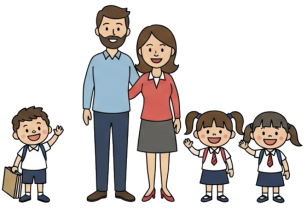
Question More, Action Knowledge.
Remember, at QMAK, we don’t just teach; we empower. We don’t just inform; we inspire. We don’t just question; we act. Become a Gold Member, and let’s unlock your child’s full potential, one question at a time.
Second grade marks a significant advancement in your child’s educational journey, a time when foundational academics solidify while personal growth and social awareness begin to emerge.
Our Grade 2 curriculum builds upon first grade foundations, introducing more sophisticated concepts in critical thinking, emotional intelligence, and early ethical reasoning at this pivotal developmental stage.
This year-long experience balances strengthening academic skills with transformative personal growth objectives that emerge naturally at age seven, nurturing not just what children learn but how they understand themselves and their place in the world.
Grade 2 marks a transition point where traditional academic skills are taking root and children are developmentally ready to engage with more complex concepts about themselves and society. Our curriculum harnesses this emerging capability while introducing thoughtfully structured experiences that build essential skills across multiple dimensions.
During this formative year, we focus on:
Grade 2 marks significant advancement in developmental capabilities, with important growth objectives that emerge at age seven. These objectives address evolving social awareness, independent thinking, and emotional resilience characteristic of this stage.
Rather than scheduled lessons, these objectives integrate into daily life through ongoing practices and intentional experiences that complement the increasing importance of academics and extracurricular activities at this age.
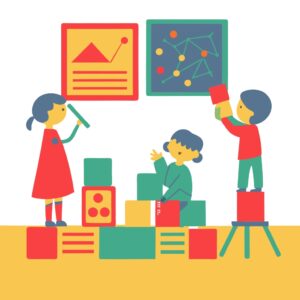
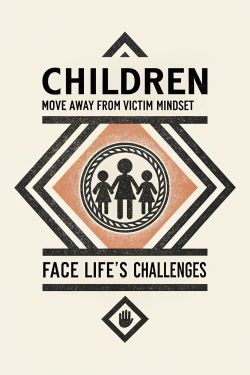
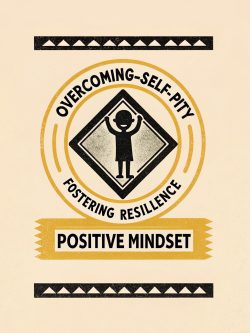
Raise Consciousness Above the Collective
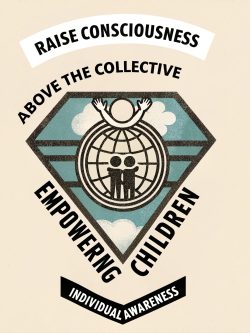
Begin to Contribute to Society
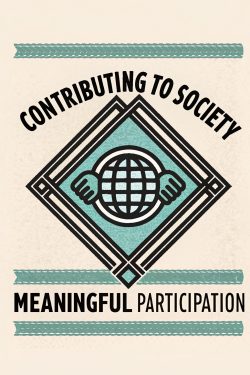
Our Grade 2 curriculum delivers monthly lessons in advanced critical thinking, entrepreneurship, emotional intelligence, and other essential skills to complement your core academic instruction.
These comprehensive lessons integrate alongside your math, language arts, science, and other traditional subjects which are now taking more definitive shape, creating a balanced educational experience at this important transitional age.
This approach allows meaningful integration of crucial life skills at a time when traditional schooling typically increases academic focus, providing the complementary capabilities that prepare your child for success in our evolving, AI-driven world.
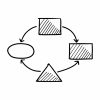
Simplification & Efficiency: Avoiding the Path of Least Resistance
Choosing what’s right instead of what’s easy helps us grow and achieve our goals, even when it means facing challenges instead of seeking instant satisfaction.

This reading exercise teaches children about avoiding the path of least resistance – choosing what’s right over what’s easy – while encouraging them to develop perseverance, self-discipline, and the ability to make choices that align with their long-term goals rather than instant gratification.
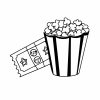
The Secret Life of Walter Mitty (2013)
This movie explores choosing growth over comfort as Walter steps outside his safe, routine life. His journey shows how embracing challenges, though tough, leads to true fulfillment and personal transformation.

Episode: Explorers
Jack steps up to lead the expedition, while his dad faces challenges navigating without satnav, demonstrating the value of persistence and problem-solving over taking the easy route.

Emotional Intelligence & Regulation: The Breezling Superstar
This month’s journey transforms children into Breezling Superstars, teaching them to relax, allow, and be aware all at once—discovering a simple yet powerful technique that turns challenging moments into opportunities for calm presence.
Book: “Take the Time: Mindfulness for Kids” by Maud Roegiers.

Episode: The Show
Bingo struggles with disappointment, but Chilli encourages emotional regulation, teaching her to express feelings and persevere. The sisters’ resilience builds emotional intelligence through creativity.

Resources & Downloads: Month 1, Grade 2
Our resource page features quizzes, songs, coloring pages, and other downloadable activities that support and reinforce this month’s lessons.

Value Creation: Making Life Easier: Solving Problems for Others
In this lesson, kids learn how they can create value—and even earn money—by solving everyday problems and making life easier, faster, or more fun for others.

Episode: Handi Products
Clear emphasis on creating value for people with disabilities. Marcus works with the team to innovate new products, improve usability, and better meet customer needs. A solid example of functional and meaningful value creation.

Emotional Intelligence & Regulation: The Intentionless Adventure
This month’s journey takes children on an Intentionless Adventure, where they playfully attempt the paradox of trying not to try—discovering the freedom, joy and relaxation that comes from simply being present without controlling their experience.
Book: “Now” by Antoinette Portis.

Episode: Relax
Chilli learns to let go of her need to control everything and embraces relaxation, discovering the joy of being present with her family.

Resources & Downloads: Month 2, Grade 2
Our resource page features quizzes, songs, coloring pages, and other downloadable activities that support and reinforce this month’s lessons.
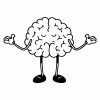
Social Influence Biases: Bandwagon Effect
The bandwagon effect is when we follow trends and do things just because others are doing them, instead of making our own independent choices.

This reading exercise teaches children about the bandwagon effect – our tendency to do things because others are doing them – while encouraging independent thinking, authentic self-expression, and making choices based on personal values rather than popularity.

A Bug’s Life (1998)
This movie explores the bandwagon effect as Flik inspires his colony to resist the grasshoppers. Students see how group behavior can shift from compliance to collective action once a few individuals lead the way.

Episode: The Decider
Chucky navigates divided loyalties between parents’ teams, reflecting emotional intelligence, while Bluey succumbs to the bandwagon effect. Both learn the value of personal choice and unity.

Emotional Intelligence & Regulation: The Compassion Quest
This month’s journey sends children on a Compassion Quest, where they imagine everyone is doing their absolute best given their circumstances—discovering how this perspective transforms frustration into understanding toward others and themselves.
Book: “The Invisible Boy” by Trudy Ludwig.

Episode: The Weekend
Bingo feels ignored when Dad misses her discovery. Through compassion, Bandit recognizes her feelings, teaching emotional awareness and regulation, and restores their connection.

Resources & Downloads: Month 3, Grade 2
Our resource page features quizzes, songs, coloring pages, and other downloadable activities that support and reinforce this month’s lessons.

Value Creation: Is It Worth It? Understanding What People Value
This lesson teaches kids how people decide what is “worth it”—based on happiness, usefulness, time-saving, uniqueness, or social appeal. Understanding this helps them make smart choices and create things others truly value.

Emotional Intelligence & Regulation: The Context and Background Explorer
This month’s journey transforms children into Context and Background Explorers, teaching them to flip between seeing objects and their surroundings, thoughts and their minds—discovering the hidden connections between everything and the spacious awareness that holds it all.
Book: “One Hungry Spider” by Jeannie Baker.

Episode: Blue Mountains
Bluey and Chilli’s hand-play adventure shows how emotional intelligence grows through empathy, trust, and learning from others—balancing caution with openness in relationships and recognizing when feelings signal real risks.

Resources & Downloads: Month 4, Grade 2
Our resource page features quizzes, songs, coloring pages, and other downloadable activities that support and reinforce this month’s lessons.

Value Creation: Mix and Match: Combining Different Ways to Create Value
In this lesson, kids learn how to combine different value-creation methods to build unique solutions, solve bigger problems, and create exciting new ideas that better serve people’s needs.

Perception & Sensory Awareness: The Body Explorer’s Adventure
This month’s journey turns children into Body Explorers, inviting them to imagine bigger bodies surrounding their own, locate emotions within themselves, and watch from new perspectives—discovering their identity extends beyond physical boundaries through playful experimentation.
Book: “Be a Tree!” by Maria Gianferrari.

Resources & Downloads: Month 5, Grade 2
Our resource page features quizzes, songs, coloring pages, and other downloadable activities that support and reinforce this month’s lessons.

Value Creation: Putting Together and Breaking Apart: Making Choices Easy or Flexible
In this lesson, kids learn how combining or separating products can give people more choices, make shopping easier, and help create fun, flexible options that better match what customers want.

Perception & Sensory Awareness: The Inner Face Explorer
This month’s journey takes children on an Inner Face Explorer adventure, where they discover how their face feels from the inside rather than appears from outside—learning to notice subtle sensations beyond the limited view mirrors show us.
Book: “Listening to My Body” by Gabi Garcia.

Episode: Swim School
Bluey and Bingo, with Bandit’s guidance, sharpen their perception as they navigate shifting rules and favoritism, learning to tune into fairness, tone, and the unspoken dynamics in play.

Resources & Downloads: Month 6, Grade 2
Our resource page features quizzes, songs, coloring pages, and other downloadable activities that support and reinforce this month’s lessons.

Value Creation: Prototypes: Testing Your Ideas Before Making Them Big
In this lesson, kids learn how to turn their ideas into simple prototypes they can test, improve, and share to see what works before creating a final version.

Episode: Skullduggery
Focuses on product development and innovation in the toy and craft kit industry.

Perception & Sensory Awareness: The Abstract Art Adventure
This month’s journey invites children on an Abstract Art Adventure, where they learn to see the world as patterns, colors, and textures instead of familiar objects—discovering fresh beauty in everyday surroundings through artistic eyes.
Book: “The Noisy Paintbox: The Colors and Sounds of Kandinsky’s Abstract Art” by Barb Rosenstock.

Resources & Downloads: Month 7, Grade 2
Our resource page features quizzes, songs, coloring pages, and other downloadable activities that support and reinforce this month’s lessons.

Value Creation: The WIGWAM Way: Making Things Better, Step by Step
In this lesson, kids learn a fun step-by-step method called the WIGWAM way to improve their ideas by watching, guessing, trying, and using feedback to make things better over time.

Episode: Mr Green Tea
An ice-cream company focused on product development and expanding flavor profiles, but the episode also leans into distribution, family dynamics, and scaling production.

Perception & Sensory Awareness: The Inner World Explorers
This month’s journey turns children into Inner World Explorers, inviting them to imagine sounds, sights, music, and eventually the entire world happening inside them—discovering new perspectives on their connection to everything around them.
Book: “The Feelings Book” by Todd Parr.

Resources & Downloads: Month 8, Grade 2
Our resource page features quizzes, songs, coloring pages, and other downloadable activities that support and reinforce this month’s lessons.

Value Creation: Trade-offs in Business: Creating Value and Understanding Choices
In this lesson, kids explore the concept of trade-offs in business—learning how choosing between good options helps focus their efforts, serve specific customers better, and create real value by making thoughtful decisions.

Episode: The Sleepover
Bluey and Bingo’s excitement clashes with Muffin’s need for rest, highlighting the trade-off between fun and health. They learn to shift focus and prioritize well-being

Perception & Sensory Awareness: The Mind Projection Playground
This month’s journey transforms children into Mind Projection Players, inviting them to imagine their minds creating everything they see like 3D movie projectors—discovering how this playful perspective shift reveals their role in shaping their experience.
Book: “The Adventures of Beekle: The Unimaginary Friend” by Dan Santat.

Resources & Downloads: Month 9, Grade 2
Our resource page features quizzes, songs, coloring pages, and other downloadable activities that support and reinforce this month’s lessons.

Decision-Making Biases: Scarcity Bias
Scarcity bias makes us want things more when they’re hard to get, like limited edition items, causing us to overvalue them just because they’re rare.

This reading exercise teaches children about scarcity bias – our tendency to value things more when they’re rare or hard to get – while encouraging thoughtful decision-making, recognizing marketing tactics, and focusing on true value rather than perceived scarcity.

Willy Wonka and the Chocolate Factory (2005)
This movie explores scarcity bias as Willy Wonka manipulates the desire for golden tickets. It shows how scarcity drives irrational behavior and reveals how it can either corrupt or strengthen character.

Value Creation: Economic Values: The Special Ingredients of Value
ChatGPT said:
In this lesson, kids discover the 9 key “economic values”—the special ingredients that help people decide what something is worth—so they can make smarter choices as creators and consumers in business.

Episode: Mr. Cory’s Cookies
The entire episode revolves around clarifying what the product is and improving the formula so it delivers consistent value. Marcus helps rework the recipe, scale production, and define the brand’s core promise.

Resources & Downloads: Month 10, Grade 2
Our resource page features quizzes, songs, coloring pages, and other downloadable activities that support and reinforce this month’s lessons.

Value Creation: The Simplest Version That Works: Understanding Minimum Viable Offer (MVO)
This lesson teaches kids the power of starting simple by introducing the Minimum Viable Offer (MVO)—the most basic version of a product that still works—so they can test ideas, learn quickly, and build something great step by step.

Episode: Smithfly Designs
Strong value proposition around innovation—specifically the inflatable fishing raft. Marcus pushes the founder to stop distracting side projects and focus on the one high-value, differentiated product. Great episode about zeroing in on what the market truly values.

Episode: Cubby
Bluey and Bingo’s huge cubby overwhelms everyone—until they realize even amazing creations feel better when they’re clear, cozy, and easy to enjoy.

Resources & Downloads: Month 11, Grade 2
Our resource page features quizzes, songs, coloring pages, and other downloadable activities that support and reinforce this month’s lessons.
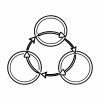
Automation & Standardization: Algorithms
Algorithms are step-by-step instructions that solve problems, like recipes or game rules, helping us break down complex tasks into simple, organized steps that produce consistent results.

This reading exercise teaches children about algorithms – step-by-step instructions that produce specific results – while showing the importance of following procedures in order, paying attention to detail, and understanding how each step contributes to the final outcome.

How to Train Your Dragon (2010)
This movie explores algorithmic thinking through Hiccup’s systematic approach to understanding and training dragons. It demonstrates how breaking down complex problems into repeatable steps leads to effective solutions.

Episode: Shadowlands
In Shadowlands, the game’s rules of staying in the shadows highlight how following a structured approach makes the experience more enjoyable and fair for everyone involved.

Value Creation: Creating Amazing Things: Your Value Creation Adventure
In this final lesson on value creation, kids take a joyful look back at everything they’ve learned—from the six ways to create value, to smart tools like trade-offs, feedback, and MVOs—so they can confidently begin turning their own ideas into real-world creations that people will love.

Resources & Downloads: Month 12, Grade 2
Our resource page features quizzes, songs, coloring pages, and other downloadable activities that support and reinforce this month’s lessons.
To enhance and reinforce the concepts taught in our curriculum, we recommend incorporating these quality television programs that align with our Grade 2 learning objectives:
The Profit This reality business show follows entrepreneur Marcus Lemonis as he invests in struggling businesses and helps transform them. It provides excellent real-world examples that reinforce our Systems Thinking and Business for Kids lessons, allowing second graders to see entrepreneurial concepts in action through carefully selected segments.
Bluey This charming animated series follows the adventures of a family of dogs, modeling healthy family dynamics, emotional intelligence, and creative play. It beautifully complements our Mind Explorers activities and Growth Objectives, presenting complex emotional concepts in accessible, age-appropriate ways. At just 7 minutes per episode, these thoughtfully created stories are perfectly sized for the attention span of most second graders, making them ideal for introducing concepts before deeper exploration.
These carefully selected programs can serve as springboards for meaningful discussions and provide visual reinforcement of the concepts being taught in our curriculum.
Our Grade 2 curriculum supplements core academic instruction with essential skills often overlooked in traditional education. These sequenced lessons develop complementary capabilities that serve your child throughout their educational journey.
We recommend following the monthly sequence, as concepts build purposefully while aligning with developmental growth objectives that emerge at age seven. Adjust pacing based on your child’s interests and learning style as needed.
Interactive activities, discussions, and projects create learning experiences that strengthen your parent-child bond while developing key skills that address the emerging independence and social awareness characteristic of this age.
Recommended movies are at parents’ discretion. Consider your child’s readiness and family values when selecting films. Alternative resources are provided if particular films aren’t appropriate.
Begin with Month 1 and watch your child develop into a confident learner who strengthens academic foundations while building critical thinking, emotional intelligence, and practical capabilities essential for our changing world.

Remember, at QMAK, we don’t just teach; we empower. We don’t just inform; we inspire. We don’t just question; we act. Become a Gold Member, and let’s unlock your child’s full potential, one question at a time.